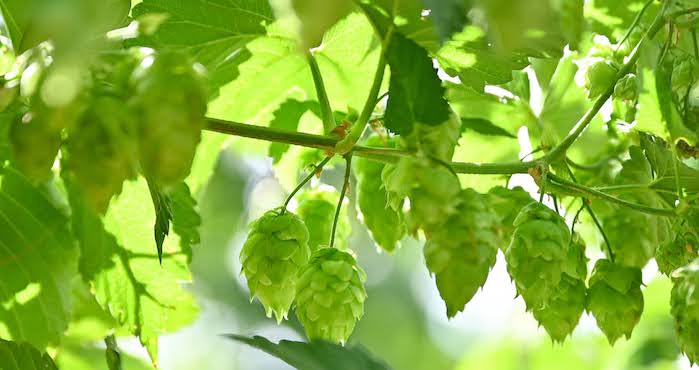Hop Science Newsletter (January 2021)
In this issue: read about hop creep, a study on bitterness and dry-hopping, and aroma stability in dry-hopped beers.

HOW MUCH CREEP DO I GET?
Dry-hopping brewers are aware of “hop creep”. Dry hop creep is a gradual reduction in beer gravity after dry-hopping in the presence of yeast due to generation of fermentable sugars from nonfermentable dextrins by hop-associated enzymes. However, it is very important for brewers to know what hop creep will do to their beer in terms of alcohol content, degree of fermentation and generation of CO2. This paper proposes a method adapted from ASBC Method of Analysis Wort-5 whereby a benchtop, forced fermentation is performed using a consistent dosage rate for dry-hopping and assessing the apparent extract and apparent degree of fermentation after 72 hours. This approach offers brewers the potential of estimating the enzymatic power, or hop creep potential, of the hops being evaluated. The researchers discovered challenges with changing the form of yeast (dried vs wet). Results indicated that a small-scale dry-hopped forced fermentation is a promising tool for assessing the potential magnitude of hop creep in a given lot of hops, and that differences in apparent extract and/or apparent degree of fermentation of forced fermentations can be used to estimate the terminal gravity post-hop creep of full-scale fermentations.¹
STABILISE YOUR BITTERNESS BY DRY-HOPPING!
It is well known that the bitter substances in beer undergo different degradation processes over time once bottled. However, there is not much data on the stability of bitter substances in dry-hopped beers available. This study investigated the stability of various bitter compounds in a lager type beer that was late and dry-hopped. The brewed beers were stored for two years at 4 °C, 22 °C and 30 °C. The aging of the beers stored at 4 °C resulted only in minor changes. The beers stored at warm temperatures confirmed the high susceptibility of trans-iso-alpha acids versus the cis version to degradation (up to 8 times higher). The interesting result was found in the dry-hopped lager: all of the bitter substances in the dry-hopped beers showed less degradation due to ageing than those in the late-hopped beers. Whether the higher stability of the bitter substances in dry-hopped beer can be attributed to the changes in its composition through the addition of dry-hops was not clearly established. Additional polyphenols may play a beneficial role in this context.²
AROMA STABILITY IN DRY-HOPPED BEERS
This question is on every brewer’s mind. How stable is the hop aroma in dry-hopped beers? There are of course two ways to analyse this. You can track the aroma components with sophisticated GC equipment or collect sensory data over a period of time or both. These Belgian researchers looked into the fate of hop aroma and fermentation compounds. They compared levels of short chain fatty acids, esters, terpenoids and polyfunctional thiols in bottle-refermented Belgian dryhopped beers before and after 2 years of storage at 20°C. Except ethyl isovalerate most hop odorants and fermentation esters showed degradation over the 2-year storage period: only 45%–70% of linalool, geraniol, and ethyl hexanoate and even less than 40% of polyfunctional thiols, ethyl isobutyrate, and ethyl heptanoate were detected after storage compared to initial concentrations. How the dry hopping process affects this degradation was further investigated in model media. Fermentation esters proved to be more strongly impacted in dryhopped than in non-dry-hopped beers because of hop esterase activity. In this context, bottle refermentation is a useful way to regenerate some flavors and consume packaged oxygen, especially with selected yeast strains able to release free thiols from cysteine and glutathione precursors.3
BARTHHAAS HOPS ACADEMY
- Feb 9th, Hop Expert Assessment, (German); Webinar
- Feb 25th, CampusArt – Brewing with BarthHaas; Webinar
- March 4th, Bootcamp Kettle Hopping 1; Webinar
- April 28th-29th, Hops Flavorist Course
For more information on the webinars listed above, please visit: https://www.barthhaas.com/en/academy
For more information on the Hops Flavorist Course, please contact your HAAS Sales Representative for more information or to register.
REFERENCES
